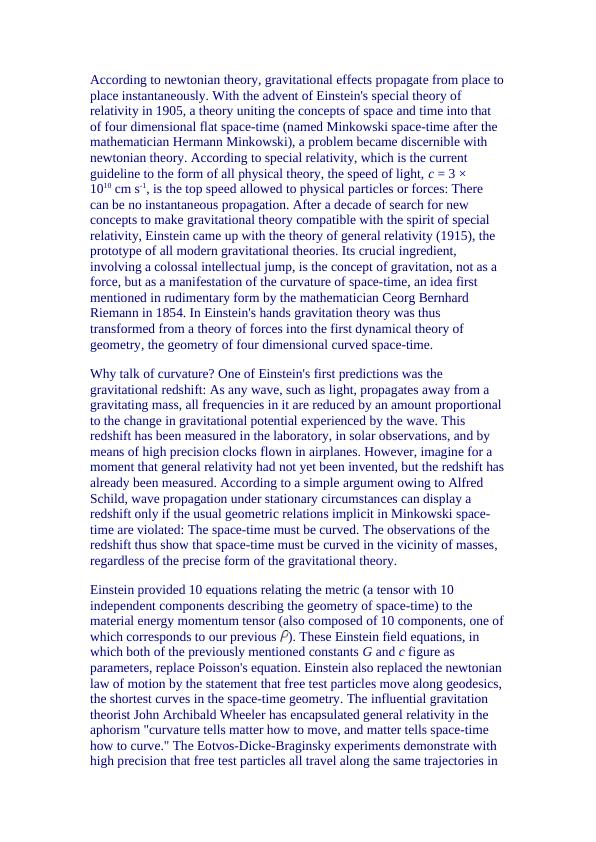Ask a question from expert
General Relativity: The First Dynamical Theory of Geometry
3 Pages1058 Words123 Views
Added on 2019-09-20
About This Document
General relativity is a theory of gravitation that transformed the way we understand space-time. It replaced the newtonian law of motion with the statement that free test particles move along geodesics, the shortest curves in the space-time geometry. Einstein's theory provided 10 equations relating the metric to the material energy momentum tensor, replacing Poisson's equation. The theory predicts the gravitational redshift, the deflection of light beams passing near a gravitating body, and the precession of the periastron of a binary system. Learn more about general relativity and its predictions on Desklib.
General Relativity: The First Dynamical Theory of Geometry
Added on 2019-09-20
BookmarkShareRelated Documents
End of preview
Want to access all the pages? Upload your documents or become a member.
General Relativity: Effects and Predictions
|5
|1430
|465
